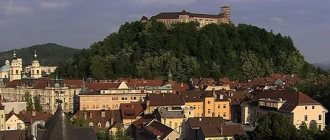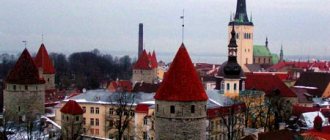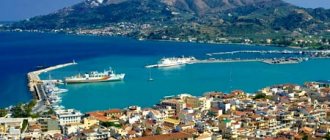The ethnogenesis of any people is studied on the basis of ethnographic, linguistic, historical and archaeological data. The Russian ethnos was formed on the basis of a single ancient Russian nationality, formed after the merger of East Slavic tribes. At the present stage of Russian history, according to various sources, there are approximately 133 million people, of which 85% live in Russia itself, and the rest abroad. Thebiggest.ru editors conducted a small demographic study and identified the countries where the largest number of Russians live outside their historical homeland.
In which countries are there many Russians?
1
Ukraine. (≈8.3 million)
The second largest nationality after the Ukrainians. According to the census conducted in 2001, slightly more than 8.3 million Russians lived in Ukraine. This was 17.3% of the total number of residents of the Ukrainian state.
After the return of Crimea to Russia and recent political events, the number of Russians has decreased significantly. Now it is approximately 6 million people.
They are most concentrated in the eastern and southern regions. Since 2014, the country has adopted a number of laws that significantly limit the rights of the Russian-speaking population. Russian cultural and educational centers are closed. The Russophobic policies of the Ukrainian authorities have complicated relations between the two countries, and also complicated the life of the Russian-speaking minority.
Kazakhstan (≈3.5 million)
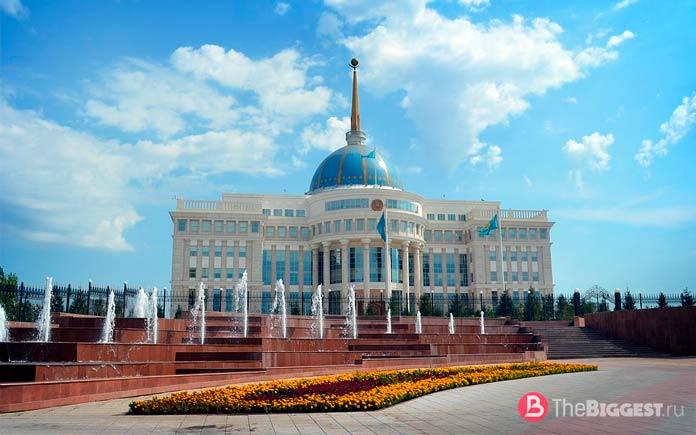
In the Central Asian country, according to data at the beginning of 2021, there are 3,553,232 Russian people according to completed questionnaires. This is the second largest ethnic group after the Kazakhs.
Before the collapse of the USSR, Russians made up approximately 40% of the population in Kazakhstan. Both then and now they are concentrated, most often in large cities. The reasons for the settlement were large construction projects on the territory of the Kazakh SSR, to which specialists were sent from the central regions of Russia.
After the collapse, most Russians did not want to leave their places of residence. Today, most Russians live in the northern regions of Kazakhstan.
3
How many years left for the Russian state
Alexander Zhelenin Journalist, Rosbalt news agency
“This is not a crisis, this is a catastrophe. Ukraine, Belarus, Russia are dying out. In general, we, as a Russian state, have about thirty years left. Muslims will live in the European part, and the Chinese will live in the Asian part,” said Archpriest Dimitry Smirnov, head of the Patriarchal Commission on Family Issues, Protection of Motherhood and Childhood, in his regular video sermon recently. Those Russians who will remain will “clean the boots” of no one knows, he added.
To confirm his rightness, the archpriest cited the example of the Byzantine Empire. Look what happened to it, he said, a great country, successor to the Roman Empire, and where is it? Hagia Sophia was turned into a mosque. The bell tower of Ivan the Great will also make a good minaret if you remove the cross from it, Smirnov added sarcastically.
As for Byzantium, it should be noted that the Greeks, unlike the Russians, who are today the absolute majority in the Russian Federation, have never been the most numerous people in “their” empire. Just as, for example, the Alawites now ruling in Syria make up only 10% of the total population of the country.
Apocalyptic scenarios from the lips of a Christian priest are commonplace. The Last Judgment, fiery Gehenna and all that. But in essence, Smirnov did not say anything original. Such forecasts and fears are common to many Russian nationalists. Not long ago, a young unemployed man from Omsk frightened me with similar scenarios. Look, he said, their (“non-Russian”) family is coming, and they have several children. And among Russians, the birth rate is declining. Soon “they” will be the majority...
At the same time, similar horror stories are common among some of the Russian liberal intelligentsia. Writer Mikhail Weller, publicist Yulia Latynina and a number of others constantly tell us about the “dominance” of Muslims in Russia and Europe.
Archpriest Smirnov’s recipe for dealing with this is as follows: you need to “dig your heels in” and not let them go. By the wear of your heels, the Lord will judge whether you are worthy to enter the kingdom of God or not, he assures. That is, there is a recipe for fighting this “evil” (and if it is not evil, then why should we fight it?), now it must be applied. Get your heels ready, gentlemen!
7229
How long to sit in a hole
Whether the ideas about the “dominance” of Muslims correspond to the facts and real statistics are details that are absolutely not interesting to anyone. Go out into the street - there are so many of them! That's all the statistics.
Against the background of these life-affirming maxims, let’s try to figure out what the state of affairs is in that area of statistics that talks about the national composition of Russia, and what trends in it can now actually be identified. It should be noted right away that from the point of view of demography, the most accurate information on the composition (including national) and size of the population is provided by the census. Annual statistical monitoring of changes in the national composition of the country shows little. The records of the entry and exit of foreign citizens and the migration growth of the population, which, after the liquidation of the Federal Migration Service, are kept by the relevant unit of the Ministry of Internal Affairs, are increasingly less reliable. Suffice it to say, for example, that there is still no data on migration growth for 2021 on the Rosstat website (and it receives this information from the Ministry of Internal Affairs).
Therefore, we can more or less fully judge the dynamics of changes in the national composition of the Russian Federation before the next Census, which is due to take place in 2021, only based on the Censuses of 2002 and 2010.
Here I will return to the words of Archpriest Smirnov about the “Russian state”. Here the priest, as they say, did not think, did not guess - he accidentally got in. This is a case where I can largely agree with him. The fact is that, despite the statements of some Russian nationalists about the need to create a “Russian state,” which, in their opinion, should be separated from the “non-Russian” republics by a high fence, the current Russian Federation (probably for the first time in history!) really predominantly a Russian state.
Just for comparison. According to the 1897 census, the Great Russian population in the Russian Empire was only 55.6 million people. This is 44.3% of its total population, which then numbered 125.6 million people. That is, Russians in the Russian Empire were only a relative majority.
With the fall of Poland and Finland from Russia in 1918, the percentage of Russians increased. According to the last All-Union Census of 1989, a little more than 145 million Russians were counted in the USSR, which then amounted to 50.6% of the total number of citizens of the USSR (286.7 million).
After the collapse of the USSR, Russians in the Russian Federation became the absolutely predominant ethnic group. According to the 2002 census, Russians made up 79.8% of the total number of Russians. According to the 2010 census, in percentage terms the number of Russians actually decreased - to 77.7%. This was caused by a drop in the Russian population over this period and in absolute numbers. If in 2002 there were almost 116 million Russians in the Russian Federation, then in 2010 there were only 111 million. And this, of course, is nothing good, but 111 million is still about 80% of the population.
30010
Kremlin bubble
Let us note that in the 1990s and 2000s, the number of not only Russians, but also representatives of most other nationalities of Russia, for example, the Finno-Ugric peoples, and not only them, decreased. From 2002 to 2010, the number of such indigenous Turkic peoples of the Russian Federation as the Chuvash and Bashkirs decreased. The number of Azerbaijanis decreased (from 620 to 600 thousand). The number of Buryats remained almost unchanged - 450 thousand in 2002 and 460 thousand in 2010.
Russian nationalists of various types point to the growing population of the North Caucasus, as well as the influx of migrants from Central Asia, as the main danger to the national identity of the Russian people. As for the latter, migration growth in Russia has slowed down, as evidenced by data from the same Rosstat. In 2021 it amounted to only 212 thousand people. It is expected that in 2021 the migration increase will decrease even more, falling to 160 thousand people (complete data for 2021 is not yet available). Moreover, we note: migrants from Central Asia and the Caucasus make up only about 50%-60% of this number. Ukrainians, Belarusians and Moldovans in Russia at the philistine level (and all our fears on the topic of migration are at this level) are not particularly considered migrants.
Now about the population growth of the national republics of the North Caucasus. Yes, this process is really underway. However, let's not forget that the total number of indigenous Caucasian peoples in the six national republics of the North Caucasus Federal District (without the predominantly Russian Stavropol region) is approximately 7 million people. Or 4.7% of the total population of Russia, numbering 146.7 million at the beginning of 2021 (including Crimea).
Let me remind you that in Moscow alone, according to the most conservative estimate, more than 12 million people live. So talking about the dominance of the North Caucasian peoples in Russia is simply ridiculous. Tatars? This has long been a pro-Russian, highly Europeanized and not very religious people.
And yet the number of Russians continues to fall, while the number of Caucasian peoples continues to grow. This is also statistics. It is important to understand the essence of this phenomenon. If we take a closer look at the statistics of the North Caucasus District, we will see that the majority of the population there still lives in rural areas. This is especially clearly seen in the example of the two largest republics - Dagestan and Chechnya. Of the 3 million inhabitants of Dagestan, 1.68 million are villagers. Of the 1.437 million Chechens, 935 thousand are rural residents. But it is the village, especially remote mountain villages, that are the custodians of traditionalist sentiments and ideas, which, moreover, are actively supported by both local and federal authorities.
It is traditionalism, intensively revived and implanted from above, that is the environment that contributes to high birth rates. However, progressive processes are taking place here too. According to sociologists at the Higher School of Economics, Dagestan today has become a much more urbanized republic than 25 years ago, and this process is actively developing here.
6072
Damansky's lessons
The idea that it is Islam that contributes to increased birth rates is refuted by observations made back in the 19th century. A pattern has long been established - the higher the level of education and general culture, the higher the urbanization, the lower the population growth rate. More precisely, it is stabilizing. And it doesn’t depend on religion.
A typical example here is a Muslim country like Saudi Arabia. With increasing urbanization (today 88% of the population of this country lives in large cities), increasing incomes of citizens and their level of education, the birth rate here has been continuously falling over the past 40 years. Today, the population of this country is gradually increasing, mainly only due to labor migrants from other, still predominantly agricultural states and regions of the East.
Accordingly, the picture of European Russia being “overrun” by Muslims is still nothing more than a figment of a sick imagination.
The number of Chinese, including in the Russian Far East, is also negligible. In 2021, 8237 citizens of the Middle Kingdom arrived in the country, and 7600 left. What to talk about?
However, the undeveloped nature of these vast territories certainly poses a threat to the future. The sensational attempt to seduce Russians with a free hectare of Far Eastern land is some kind of strange greeting to the Stolypin reform of the early twentieth century. For some reason we don’t see crowds of people willing...
Russian society has changed significantly over the past hundred years, but the government somehow did not notice it. Then there were 85% peasants, today 75% are city dwellers. And there are no peasants left in the villages. Several tens of thousands of farmers, the rest are hired workers of large agricultural holdings.
But to increase wages in the Far East and Siberia by three or four times compared to wages in the European part of the country, as was the case during the Soviet era - who is capable of this now? The economy is private, you cannot order the owner. So we can only rely on the peacefulness of the strategic eastern partner and its loyalty to bilateral treaties. Well, and also follow the wise advice of Archpriest Smirnov - “pray and pray!” What else is left to do?
Alexander Zhelenin
Germany (≈3 million)
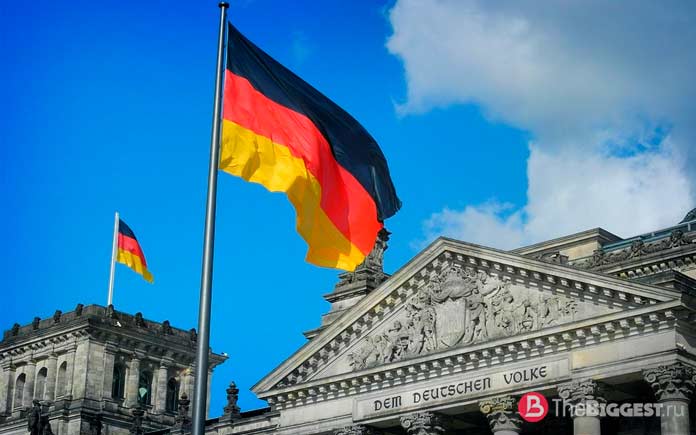
At the moment, about 3 million people from the former republics of the USSR live in Germany. About 1 million of them consider Russian their native language. The bulk of the immigrants settled in Germany during the last wave of emigration, which began in the late 1980s. But the resettlement process continues. In recent years, young people have been actively moving to Germany in the hope of finding a job or starting training. It is quite difficult to name the exact number of Russians in Germany, but sociologists assure that this diaspora is constantly growing.
Migrants from Russia prefer to settle in small towns. But large groups also live in the largest cities of the Western European country - in Berlin and Munich.
Since 1984, the Russian House has been operating in Germany, there are Russian-language pharmacies, cultural institutions and educational centers.
By the way, Germany is included on our website thebiggest.ru in the list of the richest countries in the world in 2021.
4
Where in the world are the most Russians?
Several tens of millions of Russians today are scattered around the world. Circumstances forced them to leave their native Russia at different times. Some ancestors emigrated after the Civil War, others were forced to leave after the collapse of the USSR, and many remained abroad after the former Soviet republics became independent states.
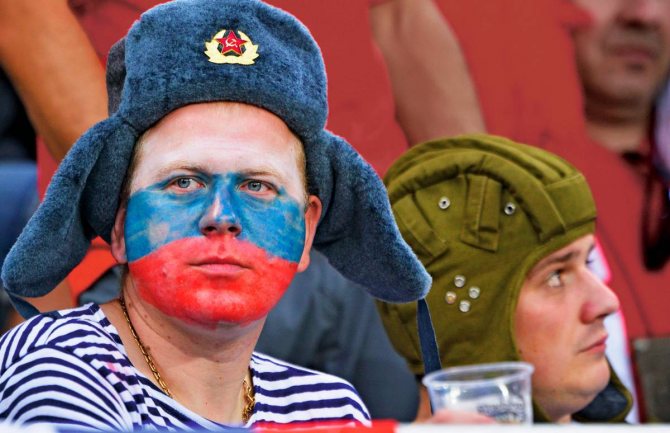
In total, from 20 to 30 million people live outside Russia who can be classified as Russian. Although Russian in this case is a relative concept. Should we consider as Russian the grandchildren of Jewish grandparents who left for Israel, or the descendants of Volga Germans who, before leaving for Germany, spoke German only at school, and even then if they studied German and not English?
The largest Russian (or Russian-speaking) diaspora in Europe is concentrated in Germany. More than 3.7 million people from Russia and former Soviet republics live here. Mostly they are either Russian Germans or Jews. Russian shops, cafes, and cultural centers in Germany will not surprise anyone. The largest communities of Russians live in Berlin, Hamburg, and Frankfurt am Main.
At least 3 million immigrants from the USSR and Russia live in the United States. Unlike Germany, America has become a new home for people of various nationalities - from Russians to representatives of the peoples of the Caucasus and Central Asia. Most Russians prefer to settle in New York, where a whole infrastructure has been created for their convenience. Many Americans complain that Russians, especially middle-aged and older ones, don’t even try to learn English - in their areas they can already communicate with a store clerk or a taxi driver. The descendants of Russian emigrants are more adapted, some of them manage to make a good career.
It is difficult to imagine Israel without immigrants from the former USSR. Today they make up more than 15% of the country’s population – over 1.1 million people. When the “Iron Curtain” collapsed, hundreds of thousands of Soviet Jews rushed to their “historic homeland.” However, many of them can only be called Jews very conditionally - Israel is open to the children of Jews and grandchildren of Jews, so it is enough to have one Jewish grandfather to be able to move to this country. However, there are just over 70 thousand Russians without Jewish origin in Israel. These are mainly members of Jewish families who left Russia and other former Soviet republics with them.
In the post-Soviet space, Russians make up a significant part of the population in several republics. In Latvia, Russians make up approximately 35% of the population. Many of them still do not have citizenship, which is why great tension remains in Latvian society. In Kazakhstan, a quarter of the country’s population identifies themselves as Russians – 26% or 4 million people. These are not only ethnic Russians, but also children from mixed marriages. In addition, very impressive Russian communities live in Kyrgyzstan, Moldova, and Azerbaijan. We don’t even have to talk about Ukraine and Belarus - there it’s more a question of a person’s political self-identification.
In the last two decades, the number of Russians in Latin American countries, Spain, Greece, Turkey, and Bulgaria has increased significantly. Thus, in the countries of Latin America there live many descendants of white emigrants and even religious communities that moved there at the beginning of the twentieth century. Mostly Russian wives of Turks live in Turkey; Bulgaria has become, due to linguistic and territorial proximity and good climate, a center of attraction for wealthy retirees. There are many “Russian” Greeks and members of their families in Greece, who also repatriated from the former Soviet republics.
Now Russians live even in such exotic countries as India, Thailand, Indonesia, Vietnam, Cambodia. And these are not only tourists, but also “free artists” - freelancers and small entrepreneurs who run their own businesses there, usually related to tourism activities.
USA (≈3 million)

In the United States, the phrase “Russian American” is not used, and all immigrants from Russia are simply called “Russians.” The history of resettlement to the New World began in the 19th century.
According to US migration services, approximately 3 million Russian-speaking people live in the country. Most of them come from Russia and Ukraine. But it is necessary to make an allowance that sometimes all immigrants from Eastern European countries fall into this category.
Large Russian communities have formed in 11 of America's largest cities. For example, about 70 thousand Russian-speaking residents live in San Francisco, but in New York there are approximately 1.6 million.
5
Russians in other countries
In Australia, there were 67,000 people who called themselves Russian, approximately one in four of whom were born in Russia.
Very few Russians live in sultry Brazil, only 100 people.
Germany is a country that has received a huge number of immigrants from Russia, who mostly arrived here quite recently - during the formation of a new state during the era of Boris Yeltsin's presidency. People who had German roots and lived for generations in the USSR and Russia are called “Russian Germans” in Germany. Calculations carried out by German government agencies indicate the number of such people is 187,835.
It is impossible to put an end to the question “How many Russians are there in the world”, because the number of people who consider themselves to be Russian people changes all the time, and therefore the data always needs to be adjusted.
Belarus (≈800 thousand)
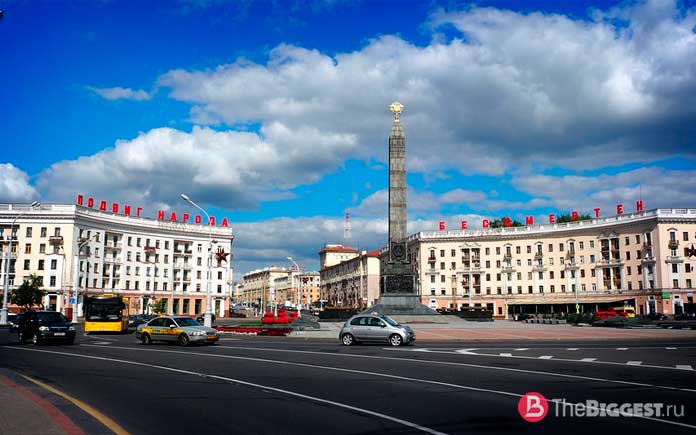
Referring to the latest census data, about 800 thousand ethnic Russians live in the Republic of Belarus. This is 8.2% of the country's total population.
The ethnographic situation is quite complex. Only 8% of the population recognize themselves as Russian, but more than 80% of the population speak Russian. At the same time, 70% call it the main one in everyday communication.
The peak of the number of Russians in this, then still Soviet republic, occurred in 1989. At that time the number was 1.5 million. Gradually, many returned to Russia, and some changed their identity to Belarusian.
How many Russians live outside of Russia?
8 Mar 2006 viewed (5795) comments (3)The Russian diaspora numbers 25-30 million people, said Alexander Chepurin, director of the department for work with compatriots abroad at the Russian Foreign Ministry.
“Ten to fifteen years ago the figures were 35-40 million people. But some of them returned to Russia,” the diplomat said.
According to him, about 1.2 million such citizens are registered with Russian consular offices. However, registration is optional and this number includes only 15-20% of all those actually permanently residing abroad.
The Foreign Ministry representative emphasizes that Russians do not lose touch with their homeland. “These people are actively working in the Russian cultural and educational field; the programs of the Government Commission for the Affairs of Compatriots Abroad are largely designed for them. Many of them ended up “abroad” against their will, primarily in the CIS and Baltic countries,” said a Foreign Ministry representative.
The largest communities are in Israel and Germany
The number of Israelis with Russian citizenship is constantly growing, Knesset member and leader of the Democratic Choice party Roman Bronfman said in an interview with the BBC.
A fifth of Israel's population, that is, more than 1.2 million people, he explained, are former Soviet citizens who form the so-called Russian-speaking community.
According to the politician, the number of Israelis holding Russian passports ranges from 100 to 120 thousand, and this figure is steadily growing along with the increase in cultural, trade and industrial ties between the two countries. “Many Russian-speaking Israelis are interested in returning Russian citizenship, which they lost when leaving the USSR, for both ideological and pragmatic reasons,” Bronfman noted.
“Unfortunately, this process is complicated by some financial and bureaucratic procedures. Until the year before last, it was possible to obtain Russian citizenship without leaving Israel, and quite a few took this step. Today, in order to become a Russian citizen, you need to go to Russia and live there for a certain time,” the politician explained.
Russian-speaking Israelis are increasingly demanding the automatic restoration of Russian citizenship for those who once lost it. “If this happened, the number of Russian citizens in Israel would increase several times,” Bronfman believes.
Every year, the population of Germany is replenished with immigrants from Russia and the CIS; according to correspondents, the number of the Russian-speaking population of Germany is approaching five million people. Of these, up to 80% are German immigrants from the countries of the former USSR, another 10% each falls on Russian-speaking Jews and representatives other nationalities.
Up to 100 thousand Aussiedlers (immigrants) arrive from the CIS countries to Germany every year. However, along with 20 thousand Germans, 80 thousand of their Russian-speaking non-German relatives enter the country, replenishing the community of the so-called “Russians” - the main contingent of modern “Russian” Germany.
There are more than 40 Russian periodicals, Russian radio and television, and a wide network of Russian stores in the country.
Source:
Other articles in People:
| Edward Snowden: life in Russia - Edward Snowden: life in Russia 13 Sep 2016 | ||
| All recent sayings of Trump - All recent sayings of Trump 28 Aug 2016 | How Zuckerberg Protects His Laptop from Spy – How Zuckerberg protects his laptop from spying 30 Jun 2016 | What Trump will make with US debt - What Trump will do with US debts 31 May 2016 |
| Way to success - Path to success May 7, 2016 |
Readers' Comments
| author: Ilya 12/11/2011 11:59:19 AM |
| Everything was lumped together: Russian speakers, Russians, citizens of Russia, citizens of the USSR... As a result, about everything and nothing. |
| Hello, dear stateless author: Begushev S.A. 3/9/2006 4:00:17 PM |
| Why did you change your color, friend from “fraternal Lithuania”? I remember that the “regime” supported me and criticized me, a sinner, and now you criticize me yourself? You write practically without errors. Or: “I would have learned Russian just because Lenin spoke it”? And as for who Russia should be friends with - don’t forget that the same Palestinian revolutionaries were trained in the USSR - “in Crimea and Rama,” there was a saying. 50-80 people per year were selected under the full program of the so-called. They drove the DPV. But they will be sold - both Palestinians and Hamas. Russia now needs to trade - otherwise there will be complete chaos inside and the people will start another revolution and take everything away from 700 new oligarchs again. So the right choice - with whom Russia should be friends - has long been ensured. In 1991. |
| author: stateless 3/9/2006 12:21:19 AM |
| So you need to be friends with someone and support Russia as a friend, so there is no regime like Saddam’s, now Hammaz is among his buddies. |
View all comments » Add your commentary
Uzbekistan (≈650 thousand)

National censuses conducted in the Central Asian state show that approximately 650 thousand ethnic Russians live permanently in Uzbekistan.
This is the largest diaspora, ranking third after the Uzbeks and Kazakhs. Most live in Tashkent. There are Russian communities in other large cities of the country.
There is a Russian center in Tashkent, and also has its own Orthodox diocese. The main church is the Assumption Cathedral, where a Sunday school operates.
7
Canada (≈550 thousand)
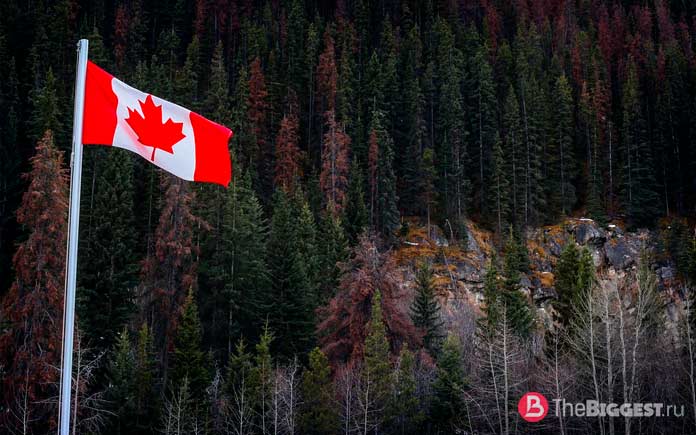
As in the USA, here it is necessary to separate two groups. There are ethnic Russians and the so-called “Russian Canadians” - descendants of immigrants from Russia.
According to migration services, approximately 550 thousand Russians live in Canada, which is 1.6% of the total population of the multinational state. Large diasporas settled in Ottawa, Toronto, and Quebec.
There are large communities in Montreal, Winnipeg, as well as British Columbia and Mississauga. In some cities there are national cultural centers.
Latvia (≈538 thousand)

In this Baltic country, Russians are the largest national minority compared to other countries in the world where ethnic Russians live.
According to the 2021 census, 538 thousand Russians live here, which is 25.7% of the total population of the Latvian state. The authorities pursue a rather tough policy towards national minorities. Thus, out of the total number of Russian speakers, almost 150 thousand Russians are recognized as “non-citizens”.
After the adoption of the law on the Latvian language in 1999, the Russian language was recognized as a foreign language. Discrimination based on nationality is a concern for parliamentarians, but the situation is only getting worse every year.
9
Statistics on travel of Russian citizens abroad in 2021
The tourism statistics agency TurStat collected statistical data on outbound tourism from Russia abroad for the period from January 1 to September 30, 2021 and explained where Russians vacationed by compiling a rating of countries visited by Russian citizens for the purpose of tourism in 2021.
Related articles:
- Statistics on travel of Russian citizens abroad based on the results of 2021 (from January to December).
- Statistics of Russian citizens traveling abroad in the first half of 2019.
Outbound tourism statistics for 2021 show that outbound trips from Russia abroad have increased compared to 2017.
In 2021, outbound tourism grew by more than 20% to Turkey, Georgia, the UAE, Tunisia, Hungary and Cuba.
The top 10 foreign countries popular among Russian tourists in 2021 in terms of the number of outbound tourist trips from Russia based on the results of 9 months were Turkey (4,907 thousand trips), Abkhazia (3,621 thousand), Finland (2,498 thousand), Kazakhstan (2,310 thousand .), Ukraine (1.793 thousand), China (1.449 thousand), Estonia (1.343 thousand), Georgia (979 thousand), Germany (950 thousand) and Italy (849 thousand).
In 2021, Türkiye is the leader in foreign trips of Russian tourists. Over the 9 months of 2021, the number of trips by Russians to Turkey amounted to more than 4.9 million, which is 24% more than in the 9 months of 2021.
Fastest Growing Travel Destinations 2018
Turkey (4.907 million trips, +24% compared to 9 months of 2021), Georgia (979 thousand, +22%), Italy (849 thousand, +19%), UAE (645 thousand, +42%) , Tunisia (558 thousand, +22%) and Armenia (327 thousand, +17%) showed the highest growth in the number of outbound tours in 2018 in the top 25 countries popular with Russian tourists.
Outbound Tourism Statistics 2021
The number of outbound tourist trips from Russia for 9 months of 2018 increased by 6.3% to 32 million 910 thousand from 30 million 972 thousand for 9 months of 2021 according to the Federal State Statistics Service (Rosstat).
Beach tourist destinations in Southeast Asia - Thailand (794 thousand, +13%) and Vietnam (389 thousand, +8%), Caribbean - Cuba (70 thousand, +32%) also showed high growth in outbound tourism from Russia for 9 months of 2021.
Top 10 European Union Countries for Russian Tourists
Outbound tourism from Russia in 2021 increased to the most popular European excursion, resort and beach destinations: Italy (849 thousand, +19%), Spain (808 thousand, +2%), France (368 thousand, 0%) , Czech Republic (370 thousand, +3%) and Austria (184 thousand +0%) based on the results of 9 months of 2021.
The top 10 EU countries popular among Russian tourists for traveling to Europe are Finland (2.498 thousand tourist trips in 2021, +1%), Estonia (1.343 thousand, +4.5%), Germany (950 thousand. +3.5%), Italy (849 thousand, +19%), Poland (829 thousand, -11%), Spain (808 thousand, +2%), Greece (749 thousand, -5%) , Cyprus (695 thousand, -6%), Lithuania (498 thousand, -1%) and the Czech Republic (370 thousand, +3%).
Outbound Tourism in the CIS and Near Abroad
Outbound tourism to the CIS countries and the former USSR in 2021 increased to Azerbaijan (592 thousand, +4%), Armenia (327 thousand, +17%) and Uzbekistan (114 thousand, +23%) based on the results of 9 months 2021 year, as well as to Georgia (979 thousand, +22%).
The most popular countries of the near abroad and the CIS among Russian tourists are Abkhazia (3.621 thousand tourist trips in 2018, +4%), Kazakhstan (2.310 thousand, +1%) and Ukraine (1.793 thousand, +5%).
Outbound Tourism to the Baltics
Outbound tourism from Russia to the Baltic countries (Baltic) in 2018 increased to Estonia (1 million 343 thousand trips, +5%) and Latvia (323 thousand, +7%) and remained virtually unchanged to Lithuania (498 thousand) according to results of 9 months of 2021.
Book a last-minute tour with a discount to one of your favorite popular countries for tourism in 2019!
Most Popular Foreign Countries in 2021:
- Türkiye, 4,907 thousand (+24%) *
- Abkhazia, 3.621 thousand (+4%)
- Finland, 2,498 thousand (+1%)
- Kazakhstan, 2,310 thousand (+1%)
- Ukraine, 1.793 thousand (+5%)
- China, 1,449 thousand (-2%)
- Estonia, 1,343 thousand (+4.5%)
- Georgia, 979 thousand (+22%)
- Germany, 950 thousand (+3.5%)
- Italy, 849 thousand (+19%)
- Poland, 829 thousand (-11%)
- Spain, 808 thousand (+2%)
- Thailand, 794 thousand (+12.5%)
- Greece, 749 thousand (-5%)
- Cyprus, 695 thousand (-6%)
- UAE, 645 thousand (+42%)
- Azerbaijan, 592 thousand (+4%)
- Tunisia, 558 thousand (+22%)
- Lithuania, 498 thousand (-1%)
- Bulgaria, 418 thousand (-10%)
- Vietnam, 389 thousand (+8%)
- Czech Republic, 370 thousand (+3%)
- France, 368 thousand (0%)
- Armenia, 327 thousand (+17%)
- Latvia, 323 thousand (+7%)
- South Ossetia, 320 thousand (-4%)
- Montenegro, 264 thousand (-8%)
- Israel, 253 thousand (-1%)
- Kyrgyzstan, 193 thousand (-3%)
- Republic of Moldova, 190 thousand (-7%)
- UK, 190 thousand (-3%)
- Austria, 184 thousand (0%)
- Republic of Korea, 180 thousand (+6.5%)
- Switzerland, 176 thousand (-3%)
- Netherlands, 166 thousand (0%)
- USA, 157 thousand (-14%)
- Dominican Republic, 152 thousand (-8%)
- India, 125 thousand (-1.5%)
- Hungary, 123 thousand (+56%)
- Uzbekistan, 114 thousand (+23%)
- Tajikistan, 92 thousand (+1%)
- Qatar, 85 thousand (+49%)
- Mongolia, 85 thousand (+25%)
- Norway, 80 thousand (-7%)
- Cuba, 70 thousand (+32%)
- Croatia, 66 thousand (+22%)
- Belgium, 63 thousand (-3%)
- Japan, 55 thousand (+12%)
- Serbia, 53 thousand (-9%)
- Portugal, 47 thousand (+47%)
- Sweden, 41 thousand (-5%)
- Jordan, 35 thousand (-3%)
- Denmark, 27 thousand (+8%)
- Maldives, 27 thousand (+29%)
- Slovakia, 21 thousand (-5%)
- Singapore, 20 thousand (0%)
- Hong Kong, 18 thousand (+38%)
- Turkmenistan, 18 thousand
- Slovenia, 13 thousand (-13%)
- Malta, 12 thousand
- Romania, 12 thousand (+33%)
- Morocco, 11 thousand (-39%)
- Bahrain, 10 thousand
- Iran, 7 thousand
- Sri Lanka, 5 thousand
- other countries, 88 thousand
* The change in the number of outbound tourist trips for 9 months of 2021 compared to 9 months of 2017 is indicated in brackets.
Share:
France (≈450 thousand)

Historically, immigrants from Russia settled in France. A huge part of the Russian-speaking population ended up here after the tragic events of the 1917 revolution and the Civil War.
The descendants of the first wave of Russian emigrants in most cases retained their national roots, and did not even forget their native language. If we take statistics, there are approximately 450 thousand Russians in the French Republic.
Russian emigrants settle in large cities and their picturesque suburbs. Many famous people in France have Russian roots.
10
Russian ethnic groups in the USA
There is a very large diaspora in the USA. On average, there are more than 3 million residents from Russia and other CIS countries who live in the largest cities of the country. In most cases, an emigrant chooses a metropolis, for example, Chicago, New York, San Francisco:
- New York is considered the first American city where Russian emigrants prefer to live . It is here that the Brighton Beach area, known for its large number of immigrants from the former USSR, is located. There are numerous Russian bars, restaurants, shops and markets here;
- a large group of Russian-speaking population lives in one of the largest cities in America - Chicago, Illinois ;
- about 600,000 emigrants are in Los Angeles , where doctors, engineers, cultural and business representatives lead an active social life and organize numerous communities;
- the oldest Russian diaspora in the United States, formed during the revolution at the beginning of the 20th century, is in San Francisco , where 70,000 Russians live.
The largest wave of emigration occurred in the 80-90s of the last century. It was since 1990 that the state limited the number of people entering from the CIS countries to 60,000 in one year. In North American countries, Russians are often called all citizens of the former USSR.
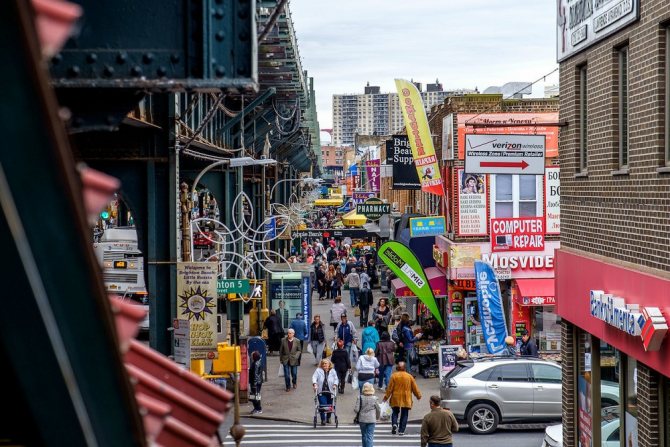
Kyrgyzstan (≈400 thousand)
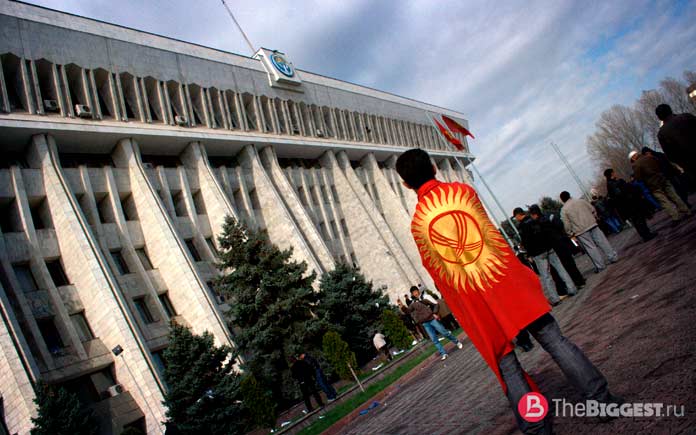
The first Russian settlers in this country appeared in the 19th century, and today from 370 to 400 thousand people permanently live in Kyrgyzstan who consider themselves Russian.
Unlike other Central Asian republics, Russian people did not experience severe discrimination in the early 90s. And today their situation is quite satisfactory. They communicate freely in their native language, there are Russian-language schools and cultural institutions.
Every year, national holidays are held in the largest cities of Kyrgyzstan, where folk traditions and customs of the ethnic Russian population are demonstrated.
By the way, on our website thebiggest.ru there is an interesting article about landlocked countries in Asia.
11
Which countries are the most Russian?
On December 18, the planet celebrated International Migrants Day, proclaimed by the UN General Assembly. It was on this day in 1990 that the International Convention on the Protection of the Rights of All Migrant Workers and Members of Their Families was adopted. From this point of view, Russia is a unique country, since it is both a large “exporter” and an “importer”. We have already written about migration to our country, more than once. This time we decided to talk about how many people live in different countries of the world who consider Russian their native language, and to find the largest “islands” in the global archipelago of our compatriots.
The Russian diaspora in the world today amounts to about 30 million people and ranks second in size after the Chinese. Moreover, if for China the reason for such massive emigration is the country’s overpopulation, then the same cannot be said about Russia, with its huge half-empty spaces. The Russians left not in search of free lands, but in search of a better life. They went wherever they wanted and often as far as possible from their native shores. The best indicator of this is the raw numbers of the last World Congress of Compatriots, which took place at the end of 2009. Delegations from 88 (!) countries took part in it.
Many, however, became members of the diaspora without moving anywhere. First, Alaska was transferred to America along with its inhabitants, and then the Russians in the blink of an eye found themselves abroad during the division of the Russian Empire and the Soviet Union.
Currently, Russian is the native language of 26.4 million residents of the CIS and Baltic republics, that is, the former USSR, and almost 7.4 million residents of non-CIS countries. Thanks to this, the Russian language still ranks fourth in the world in terms of prevalence, second only to English, Chinese and Spanish.
In the 19th century, Old Believers left Russia en masse, fleeing religious repression.
They went not only to Europe, but also overseas and to China. Even in Latin America - Brazil, Paraguay, Uruguay, Argentina, etc. – then large Russian colonies were formed. Many Russian emigrants settled in the USA and Canada. At the beginning of the 20th century, another wave of emigration was caused by devastation due to tsarist repressions, and then wars - the First World War and the Civil War. Then, according to various sources, from 2 to 5 million people left the country. Last year, in the state of Rio Grande do Sul in southern Brazil, where many of our compatriots live, a law was even passed according to which October 9 will be celebrated as a holiday - Russian Immigration Day. In the city of Campina das Misois, a monument was unveiled to these people - an Orthodox cross installed at the entrance to the city, at the foot of which there are statues of John the Evangelist and a family of Russian peasants. Mother and daughter are holding ears of wheat and inflorescences of sunflowers in their hands, and the father with a hoe on his shoulder is looking at the horizon from under his palm.
The events of 1939–1945 expelled about 6 million more people from the country. After the collapse of the USSR, a new wave followed - people were fleeing criminal terror and galloping inflation. At that time, about 4 million people emigrated from post-Soviet Russia. The most popular destination was Germany, second place was taken by Israel, third by the USA, fourth-fifth by Canada and Finland. Almost 97% of emigrants went to one of these five countries.
Then the flow of emigration seemed to subside, but in recent years it has again begun to increase sharply. Over the past five years, about half a million people have left Russia. Moreover, a fifth of those leaving are young people aged 20 to 24. This is something else – quiet, unofficial emigration. Most of them de jure retain Russian citizenship, although de facto they permanently live, work and pay taxes in their new place of residence. After working for two years under a contract and a work visa, many then receive a residence permit.
On this topic
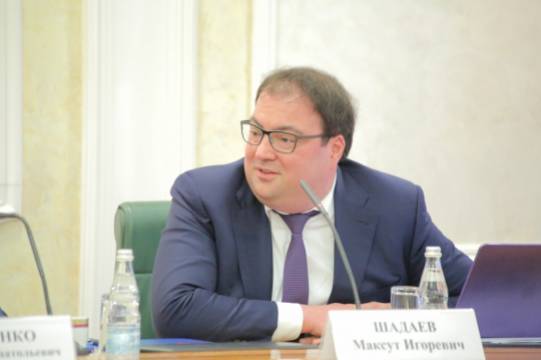
3278
Somehow on your own...
The head of the Ministry of Digital Development, Maksut Shadayev, equalized the rights of Russian and foreign software developers
About 40% have left in recent years in search of new work and fulfillment. Most of them are highly qualified specialists in various technical fields, lawyers, scientists, and entrepreneurs. According to the director of the Institute of Globalization Problems, Mikhail Delyagin, “first of all, the most active citizens who are tired of forcefully solving economic problems come from Russia, and this leads to the degradation of those who remain.” Another 22% of emigrants seek asylum as refugees. Russians have already been accepted in this status in 37 countries around the world. Two thirds of Russian refugees live in Poland, Austria, France and Belgium, and a sixth live in Norway, Sweden and Germany. At the same time, for example, in Norway, refugees from Russia are among the low-ranking top three along with Iraq and Somalia, and in terms of the growth of their number they are comparable only to Afghanistan.
The third largest group of Russian emigrants (20%) are those who left to study and then stayed to live and work in the country where they received their education. Thus, over 30 thousand people leave Russia for the UK annually on study visas, and another 5 thousand students go to Germany, France, Canada and Australia. Statistics show that approximately 30% of them do not return.
Compared to the 90s, the list of priorities for modern migrants has changed slightly. The top ten current emigration channels include the USA, Germany, Canada, Greece, Spain, Italy, Norway, France, Great Britain, and Sweden. As you can see, the flow to Israel has dried up, but large Russian diasporas have appeared in Southern Europe, Scandinavia and Foggy Albion.
In recent years, the emigration of Russians from the Far East and Siberia to China and, to a lesser extent, to South Korea has become a serious phenomenon. In general, according to a survey conducted by the Ekho Moskvy radio station, 72% of listeners want to leave for permanent residence in another country. Of course, this is not a full-fledged social research, but we are talking about an active, thinking part of society...
However, you can see the good side in everything that happens. The great German philosopher Martin Heidegger noted that “language is the house of being,” that is, the foundation on which the life of the individual, the family, and the state rests.
A special phenomenon is the Russian language in the CIS countries. Thanks to him, millions of cultural, economic and everyday connections between the republics of the former USSR are maintained. Thanks to him, we actually live in one mega-country. A Russian person in the CIS countries, like a Moldavian, Kazakh, Azerbaijani, Uzbek, Georgian, Tajik, or Armenian in Russia, feels not at all as “foreign” as, say, an American or a Frenchman.
Moldova (≈380 thousand)

Another former republic of the Soviet Union, where a large number of ethnic Russians remained to live after the collapse of the USSR. Today this is approximately 380 thousand people.
The reduction in the diaspora is associated with frequent interethnic marriages, when children born in Russian-Moldavian marriages were considered ethnic Moldovans.
After a short conflict, Transnistria separated from Moldova, where Russians do not experience national pressure or discomfort at all. Here, in the PMR, the main language of communication, along with Moldovan, is Russian.
12
Estonia (≈330 thousand)
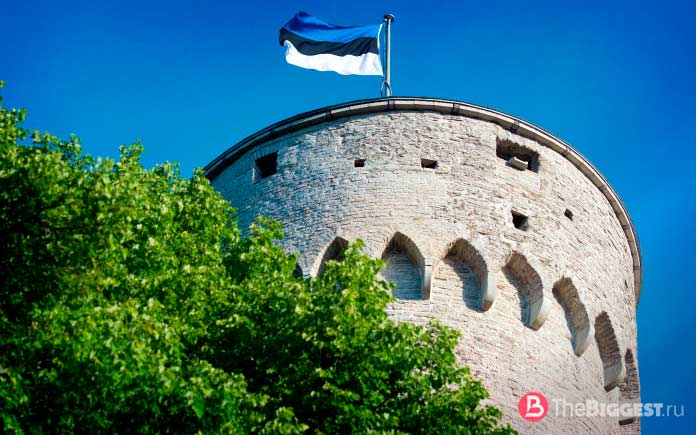
Russians live in almost all regions of this small Baltic country. According to census data, approximately 250–330 thousand Russians permanently reside in Estonia.
As in neighboring Latvia and Estonia, ethnic Russians are under pressure from the authorities. There is discrimination based on nationality, as noted in the reports of human rights organizations in Russia and the EU.
Statistics show that 53% of Russians have Estonian citizenship, 21% are stateless, and 24.3% accepted Russian citizenship but remained to reside in Estonia.
13
Argentina (≈300 thousand)

Faraway Argentina has one of the largest diasporas in Latin America. According to various sources, there are approximately 270–300 thousand people here from Russia.
It is noteworthy that approximately 100 thousand of the total diaspora have retained knowledge of the Russian language and can communicate freely in it. The Russian-speaking population is mostly divided, but in the capital of Argentina there is an Orthodox community that has its own church and schools. A newspaper in Russian, Our Country, is also published.
Patagonia is home to a large community of Old Believers who have preserved national traditions and culture.
Russian diasporas in Australia and New Zealand
The first subject of the Russian Empire who settled permanently in Australia (more precisely, in Tasmania) was a Belarusian, who was arrested in England in 1804 and sent to hard labor in the Australian colonies. After serving his sentence, the prisoner remained to live in the country on a permanent basis.
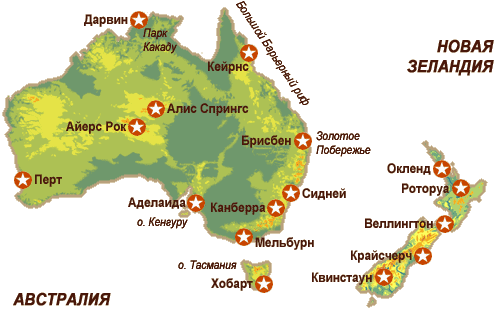
Map of Australia and New Zealand
It is believed that he was the progenitor of the Russian diaspora in Australia. However, according to the colonial authorities of Australia, in 1820 there were already 4 Russian-speaking families living on the continent, consisting of former prisoners, so it is impossible to accurately identify the progenitor of the Russian diaspora.
The massive flow of immigrants from the Russian Empire (later the USSR and the Russian Federation) and the territories under its control began at the end of the 19th century. The first wave of migration lasted 25 years from 1880 to 1905. During this period, Russian Jews mainly moved from the territory of the Baltic states and the South-Western regions of the Empire, fleeing the wave of anti-Semitism that swept Europe at that time.
In 1901, the year the Commonwealth of Australia declared its formal independence from the British Crown, the number of Russians in the country was about 3.5 thousand people.
There were waves of migration during the Russo-Japanese War of 1905, unrest and Revolution at the end of the Russian Empire and during the Soviet Union. These were mainly people who disagreed with the current political course of the state, deserters and counter-revolutionaries. The movement to the Green Continent continues today.
Today, about 30 thousand people from the countries of the former USSR live in Australia, and about 60 thousand people are descendants of Russian immigrants.
Today in Australia there are 3 newspapers in Russian and two television programs.
If we talk about the Russian diaspora in New Zealand, it is more numerous in relation to the local population than in Australia (20 thousand Russians per 4.6 million indigenous inhabitants in New Zealand and about 30 thousand Russians per 30 million inhabitants of the Union). The first migrants from Russia to New Zealand appeared somewhere in the middle of the 19th century (there is no exact data).
Today, most of the ethnic community is concentrated in Auckland and Wellington. The country has a Russian cultural center in Christchurch.
Lithuania (≈180 thousand)
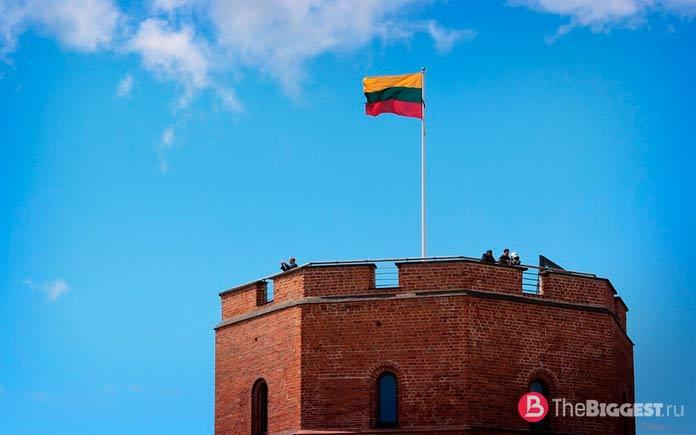
A large number of Russians remained in this Baltic country after the collapse of the Union of Soviet Socialist Republics. It is estimated that approximately 180 thousand Russians live in Lithuania, which is 5.8% of the total population.
Unlike Latvia and Estonia, in 1991 all Russians living in the republic at that time received Lithuanian citizenship. They received full civil rights, but experienced some discomfort.
In Vilnius there is a Russian Cultural Center, an Association of Compatriots, and there are Russian-language theaters. But a survey by the EU human rights organization found that 12% of Russians in Lithuania experience discrimination.
15
Azerbaijan (≈115 thousand)

One of the largest ethnic groups, occupying 3rd place in number after the Azerbaijanis and Lezgins themselves. Approximately 115 thousand Russians live on the territory of Azerbaijan.
Most concentrated in Baku, as well as in the Sumgait and Ismailli regions. The first settlers appeared here in the 19th century, and throughout their history they played an important role in the development of the Transcaucasian state.
The Russian community is active in Azerbaijan. The Azerbaijan State Russian Drama Theater has been operating in the capital of the state since 1920. It bears the name of the poet and playwright Samed Vurgun.
Great Britain (≈15 thousand)
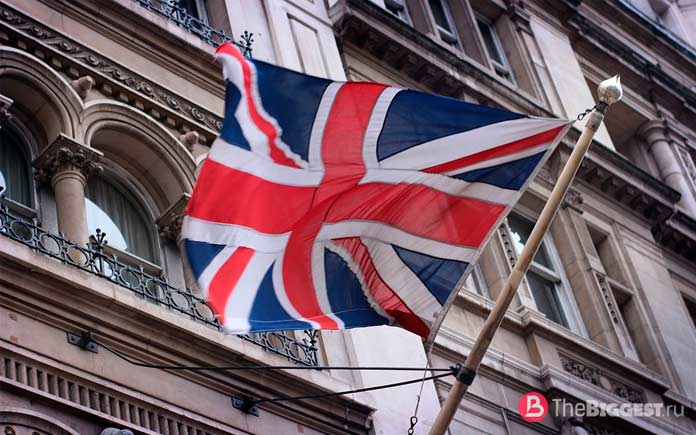
In 2001, during the census in the United Kingdom, 15,160 people indicated Russia as their country of birth.
In total, according to experts, approximately 280 thousand immigrants from Russia live in the vastness of Great Britain. Throughout the history of relations between the two countries, several waves of emigration can be traced, the last of which began in the early 2000s.
Recently, young people from Russia have been trying to enroll in universities in England, and after graduating from educational institutions, find work in large English cities. Russian oligarchs also choose England as their country of permanent residence.
Bottom line
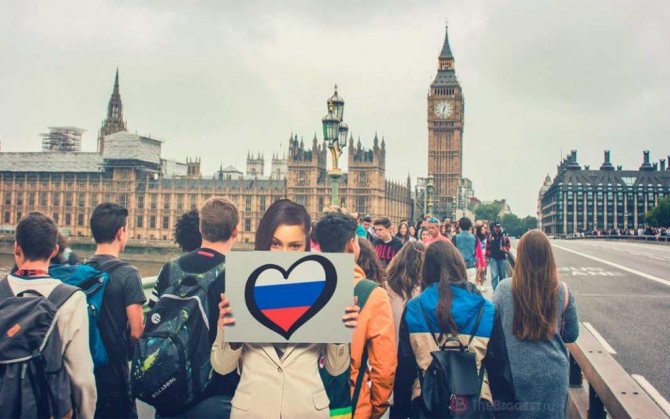
Summarizing all of the above, we note that after the collapse of the Soviet Union, the Russian people turned out to be the most divided in the world. After new borders appeared in Eastern Europe, the Caucasus and Central Asia, many Russian people found themselves abroad. The settlement processes were also influenced by economic crises, when Russians left in search of a better life in the countries of Western Europe and America.
Thebiggest editors are looking forward to your interesting comments on our topic.
Russian communities in South America
As a rule, the largest waves of emigration coincide with major events in the country. The largest number of people left for South America during the years of the revolution, civil war and during perestroika. There is a large Russian diaspora in Argentina, numbering about 300,000 people. A large number of immigrants are in Brazil, Uruguay, and since the 1930s people also began to come to Paraguay. The large flow of Russians was the cause of political and economic crises.
The immigrants were a large number of military personnel, engineers, and scientists who created communities. Russians abroad protect culture, cultural ties with their homeland, and national interest. In the capital of Argentina there is an Institute of Russian Culture, and there is also a radio broadcasting Russian classical music.


